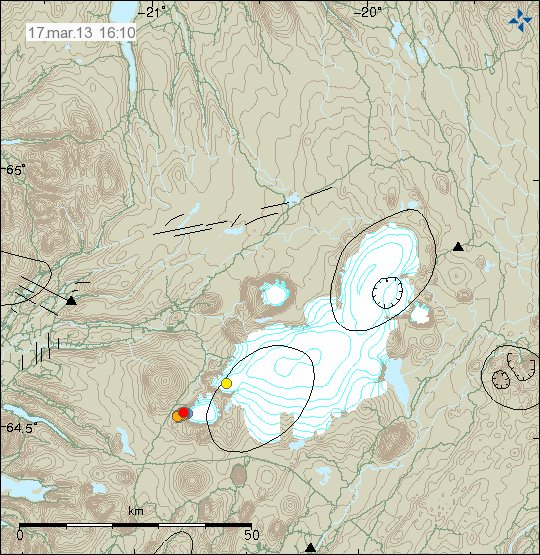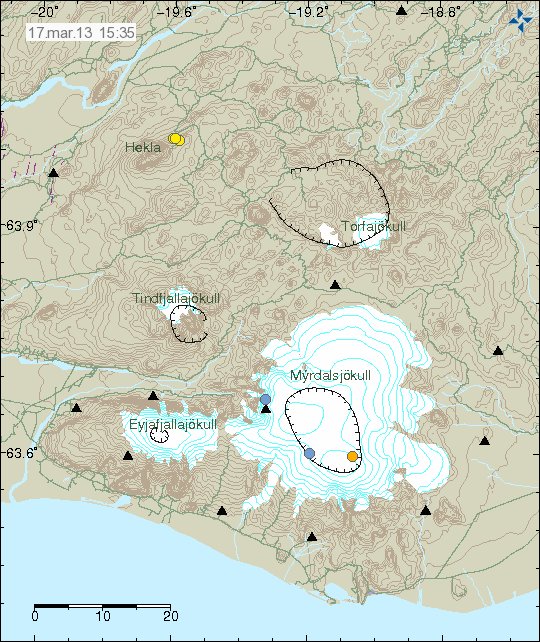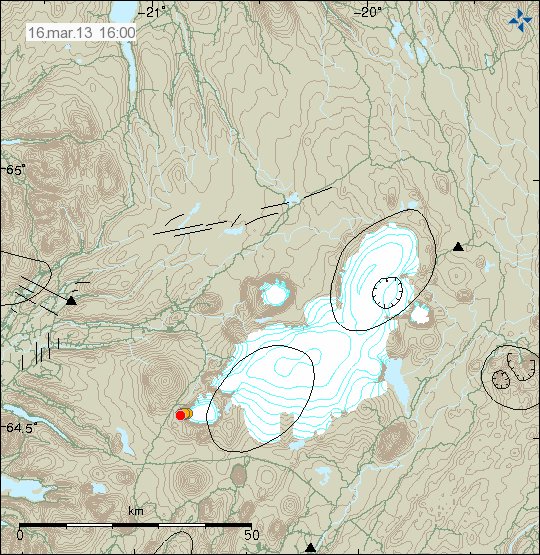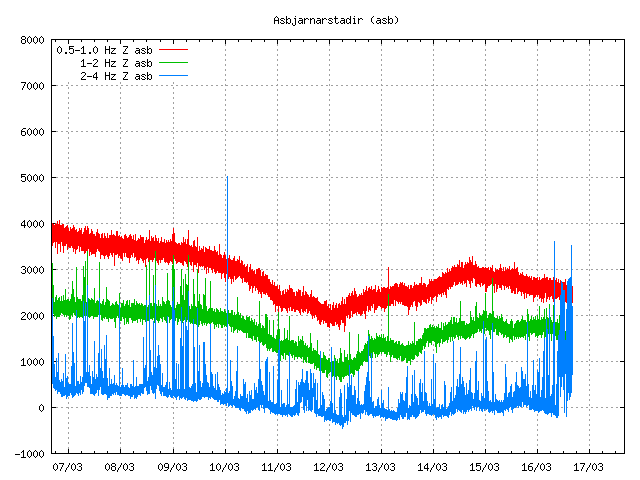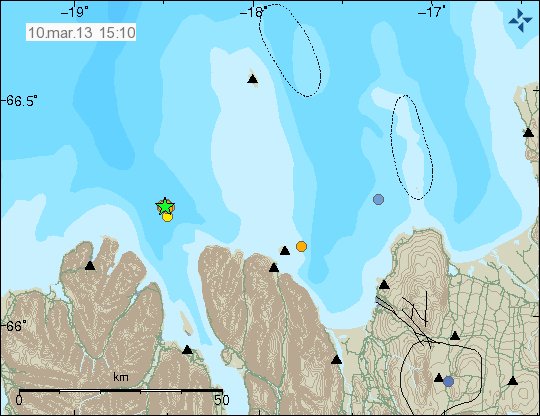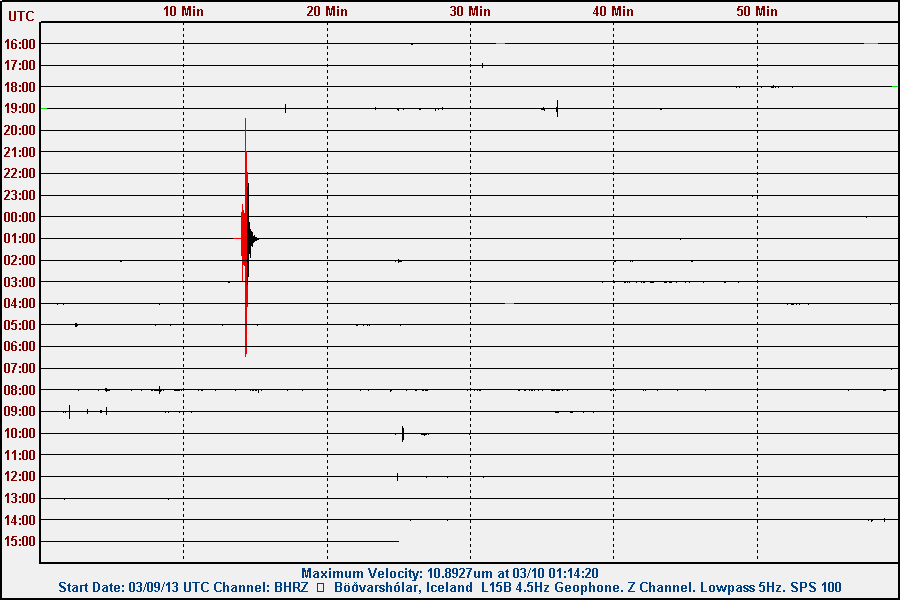Today (20.03.2013) at 10:51 UTC an earthquake swarm started on the Reykjanes ridge. This earthquake swarm was about 850 km away from Reykjavík so it was not felt. This also gives little information on what is happening in this location. Since the depth of the ocean at this location is around 2 to 3 km. The largest earthquake in this swarm had the magnitude of 4.8 according to automatic EMSC results. The range of magnitude that was detected is from 4.6 to 4.8. The estimated depth is around 10 km. But that might not be correct.
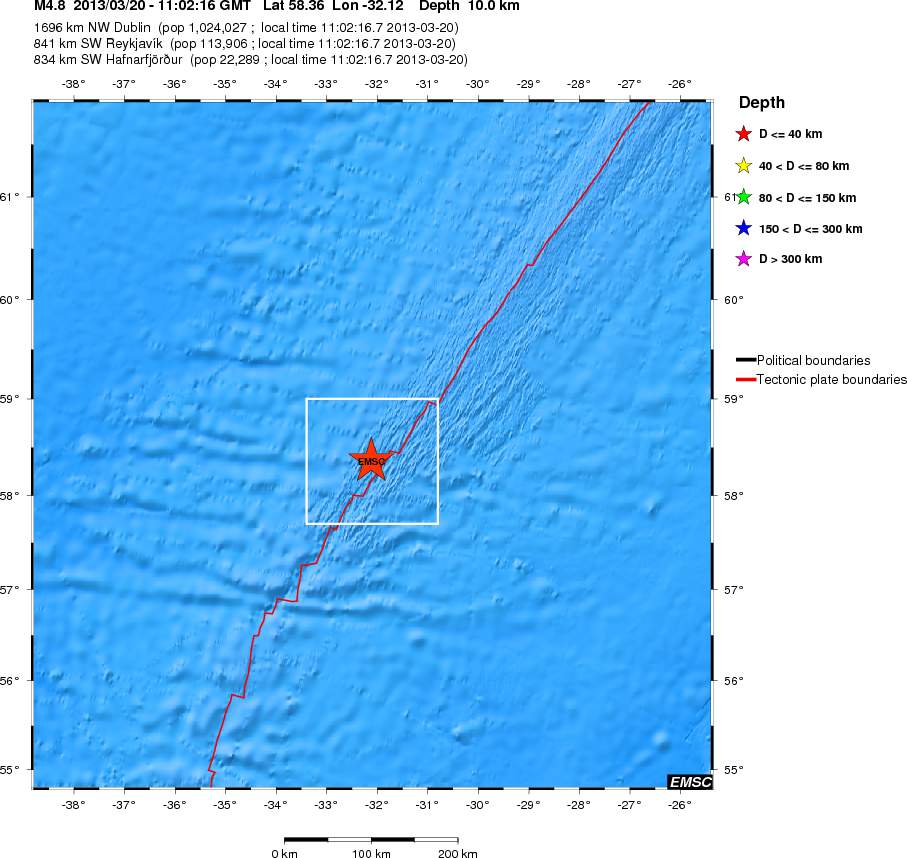
The location of the strongest earthquake in this swarm on the Reykjanes ridge. Copyright of this image belongs to EMSC.
More information on the strongest earthquake in this swarm can be found here, on the EMSC web site. I do not know if activity is going to continue in this place. This location is just too remote to know that for sure.



